Tule Springs Fossil Beds National Monument preserves thousands of Pleistocene (Ice Age) fossils that help tell the story of an ever-changing ecosystem. These fossils were preserved within expanding and contracting wetlands between 100,000-12,500 years ago. Many of the Pleistocene animals of Tule Springs are still alive today, including the coyote (Canis latrans), jackrabbit (Lepus sp.), and aquatic snails. Some animals went extinct, disappearing from North America entirely.
-
Tule Springs Fossil Beds National Monument
Article 1: Columbian Mammoth
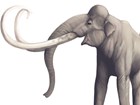
The Columbian mammoth is the largest and most identified extinct large mammal found in the Las Vegas Formation at Tule Springs Fossil Bed National Monument. Columbian mammoths belonged to the same family as living elephants. Read more
-
Tule Springs Fossil Beds National Monument
Article 2: The Big Cats
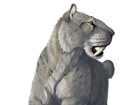
During the late Pleistocene, Tule Springs Fossil Beds was home to two extinct large cats: the sabertooth cat and the American lion. These apex predators represent two distinct cat lineages; one of which was the last of its kind in North America. Read more
-
Tule Springs Fossil Beds National Monument
Article 3: The Camels
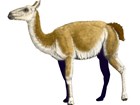
Two different genera of camelids have been identified from the late Pleistocene deposits of Tule Springs. Fossils of the ancient camel make up one third (about 38%) of the total large Pleistocene mammals identified at Tule Springs. The ancient llama is only known from one fossil specimen. Read more
-
Tule Springs Fossil Beds National Monument
Article 4: Ancient Horse

Horses first evolved in North America during the Eocene epoch and adapted to the changing climate over tens of millions of years. Equus scotti was one of the last of the native North American horses and had a wide distribution over the continent, before it went extinct 10,000 years ago. Read more
-
Tule Springs Fossil Beds National Monument
Article 5: Giant Ground Sloths
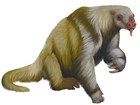
Two species of giant ground sloth are represented in the Pleistocene fossil record of Tule Springs Fossil Beds National Monument: the Shasta ground sloth and Jefferson’s ground sloth. These extinct herbivores were approximately the size of a car. Read more
-
Tule Springs Fossil Beds National Monument
Article 6: Dire Wolf
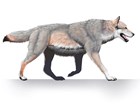
The dire wolf is a recent addition to the Pleistocene fauna found at Tule Springs Fossil Beds. The dire wolf was about the size of the largest gray wolves, with a shoulder height of about three feet. Read more
-
Tule Springs Fossil Beds National Monument
Article 7: Teratorn
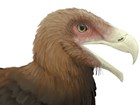
Approximately one-third larger than the California condor, the teratorn was the largest bird found at Tule Springs Fossil Beds National Monument. This scavenging raptor also hunted small mammals and had a 12-foot wingspan. Read more
-
Tule Springs Fossil Beds National Monument
Article 8: Tule Springs Pronghorn
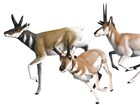
Pronghorn fossils are known from Tule Springs Fossil Beds but none of them allow for identification to species. There are several candidates for which type of pronghorn lived in the Las Vegas Valley during the Pleistocene. Read more
-
Tule Springs Fossil Beds National Monument
Article 9: Ancient Bison
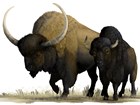
Although some species have gone extinct, bison have lived in North America for hundreds of thousands of years. Herds of now-extinct bison once lived in what is now Tule Springs Fossil Beds National Monument during the Pleistocene epoch, between 100,000-12,500 years ago. Read more
